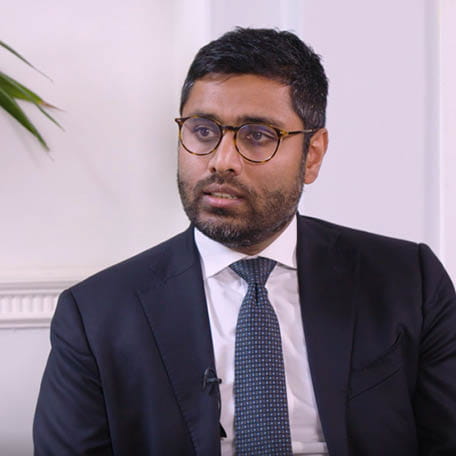The growing demands for investments to help protect the environment and promote societal welfare are well known. Indeed, many investment funds incorporate ‘sustainable’ in their names to indicate that there are certain Environmental, Social and/or Governance (ESG) factors considered as part of their investment process. However, one asset class will often by nature integrate the consideration of ESG factors in the investment process - real assets.
Real assets are tangible assets that derive their value from their availability to, and usability by, consumers and businesses. They are extremely varied and include, for example, buildings; infrastructure such as toll roads, solar and wind farms; commodities such as energy (oil and gas), industrial and precious metals and agricultural produce, such as wheat and orange juice.
Investing directly in commodities is commonly expedited via futures trading. The abstract nature of derivatives limits their ESG relevance, although oil and gas clearly raise sustainability issues, and commodity derivatives can help companies to manage risks, which is important for good governance.
However, other sectors of real assets – such as real estate, transport and energy – do generate emissions. Equally, they hold the potential to positively contribute to the fight against climate change through greater investment. But real assets pose many social and governance issues, too.
ESG considerations in real estate
Real estate provides the environment in which we live and work, shop, pursue recreation, go to school, and receive medical treatment, etc. While buildings can have far-reaching negative implications, the pressure from investors, regulators, policymakers, etc to ensure their impacts are positive from an ESG perspective is growing and investors can play a key role here.
How buildings are managed can have substantial environmental impacts. Landlords can ensure that they are energy-efficient by ensuring they are sufficiently insulated and installing smart technology to regulate temperatures, for example, or have on-site renewable energy generation. Landlords can engage with tenants to promote ESG standards. For example, ‘green’ leases that embed sustainability into contract clauses can be used to ensure both parties work to achieve environmental goals.
Real estate can have a positive social impact. Social housing provides homes for people who have low incomes or other difficulties in accessing the housing market, but buildings can also be designed and managed to promote people’s wellness, by creating pleasant environments for people to work or live, for example.
Regulatory pressures are growing to ensure buildings are safe and good for the environment, such as the Minimum Energy Efficiency Standards in England and Wales, while the industry-led organisation, Global Real Estate Sustainability Benchmark (GRESB), provides a methodology and framework by which to measure the ESG performance of individual assets and portfolios. Complying with these regulations has governance implications, not least because breaching them could raise legal, regulatory and reputational hazards.
A key role to play
Infrastructure also has a major impact on our lives, influencing economies and their progression, social systems, our well-being and the environment.
Infrastructure systems include transport, power, telecommunications, healthcare, water and sanitation. In less developed countries, infrastructure can be highly beneficial in giving the populace access to basic services, such as energy, water, sanitation and in boosting the economy. ESG considerations can also limit or halt infrastructure development, such as roads or airports seen as disproportionately harmful to the environment or people’s quality of life.
Energy-related infrastructure can have a significantly positive environmental impact. The world is undergoing an energy transition from fossil fuels to renewables such as hydro, wind and solar power and investors can play a crucial role in financing the installations to achieve this. The UN Environment Programme estimates that the costs of adapting in just developing countries will be around US$140 billion to US$300 billion a year by 2030, and up to $500 billion annually by 2050 to tackle climate change and limit global warming to an increase of 1.5C above pre-industrial levels.[1]
Responsible investment goals
Managers of real asset funds and installation owners will often engage with key stakeholders, including tenants, staff and the wider communities around certain assets on issues of sustainability. This influence can be enhanced when assets are owned via private equity, which is common in real assets.
Whereas shareholder engagement with management and action such as voting is prevalent for public equity investors, it is growing in infrastructure too, with private shareholders strongly placed to positively influence ESG integration decisions should they choose to. Although private debt investors have less influence than equity investors, they can still promote and drive ESG changes by, for example, setting conditions within funding covenants. Challenges do exist to managers of real asset investments expressing and quantifying their ESG credentials, such as the need for more standardisation of ESG analysis and measurement, and more reporting. But investments in real assets could have a part to play in helping investors meet their responsible investing goals.
Liontrust is committed to developing our responsible investment activities across all our fund management teams. We are a signatory to the PRI, a UN-supported network of investors that promotes the incorporation of ESG factors into investment decision-making. With regards to Diversified Real Assets, we are conscious that taking account of ESG factors is an important element in controlling risks.
For more information on the Liontrust Diversified Real Assets Fund, please visit the website or speak to your Liontrust client relationship manager.
Mayank Markanday is Head of Diversified Real Assets at Liontrust and Manager of the Diversified Real Assets Fund.
[1] UN Environment Programme Article June 2021: The trillion dollar climate finance challenge (and opportunity),
KEY RISKS
Past performance is not a guide to future performance. The value of an investment and the income generated from it can fall as well as rise and is not guaranteed. You may get back less than you originally invested.
The issue of units/shares in Liontrust Funds may be subject to an initial charge, which will have an impact on the realisable value of the investment, particularly in the short term. Investments should always be considered as long term.
The nature of the Fund's holdings mean they may be more difficult to value objectively so may be incorrectly priced, and may at times be harder to sell. This could lead to reduced liquidity in the Fund. The fund invests in non-mainstream (alternative) assets indirectly through other collective investment schemes. During periods of stressed market conditions non-mainstream (alternative) assets may be difficult to sell at a fair price, which may cause prices to fluctuate more sharply.
DISCLAIMER
This is a marketing communication. Before making an investment, you should read the relevant Prospectus and the Key Investor Information Document (KIID), which provide full product details including investment charges and risks. These documents can be obtained, free of charge, from www.liontrust.co.uk or direct from Liontrust. Always research your own investments. If you are not a professional investor please consult a regulated financial adviser regarding the suitability of such an investment for you and your personal circumstances.
This should not be construed as advice for investment in any product or security mentioned, an offer to buy or sell units/shares of Funds mentioned, or a solicitation to purchase securities in any company or investment product. Examples of stocks are provided for general information only to demonstrate our investment philosophy. The investment being promoted is for units in a fund, not directly in the underlying assets. It contains information and analysis that is believed to be accurate at the time of publication, but is subject to change without notice. Whilst care has been taken in compiling the content of this document, no representation or warranty, express or implied, is made by Liontrust as to its accuracy or completeness, including for external sources (which may have been used) which have not been verified. It should not be copied, forwarded, reproduced, divulged or otherwise distributed in any form whether by way of fax, email, oral or otherwise, in whole or in part without the express and prior written consent of Liontrust.











